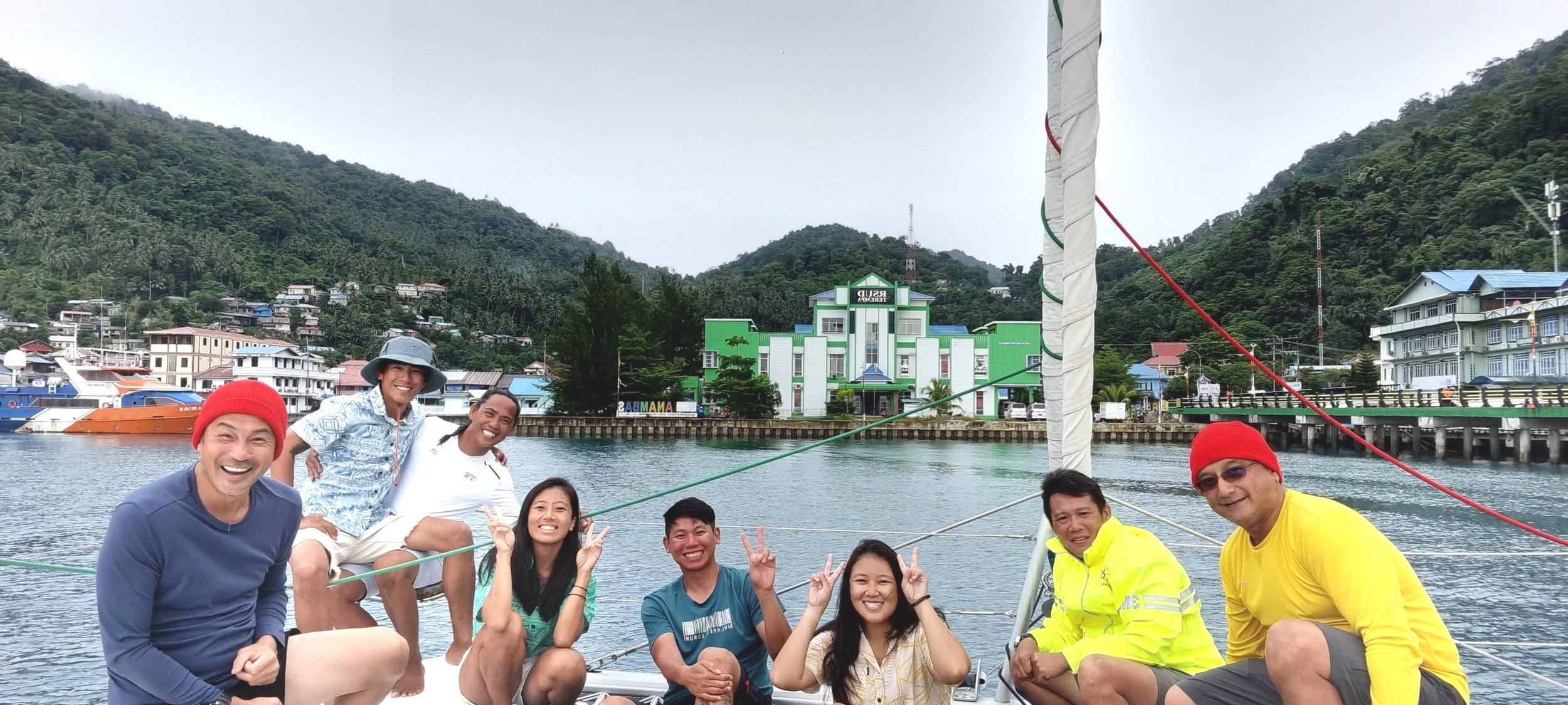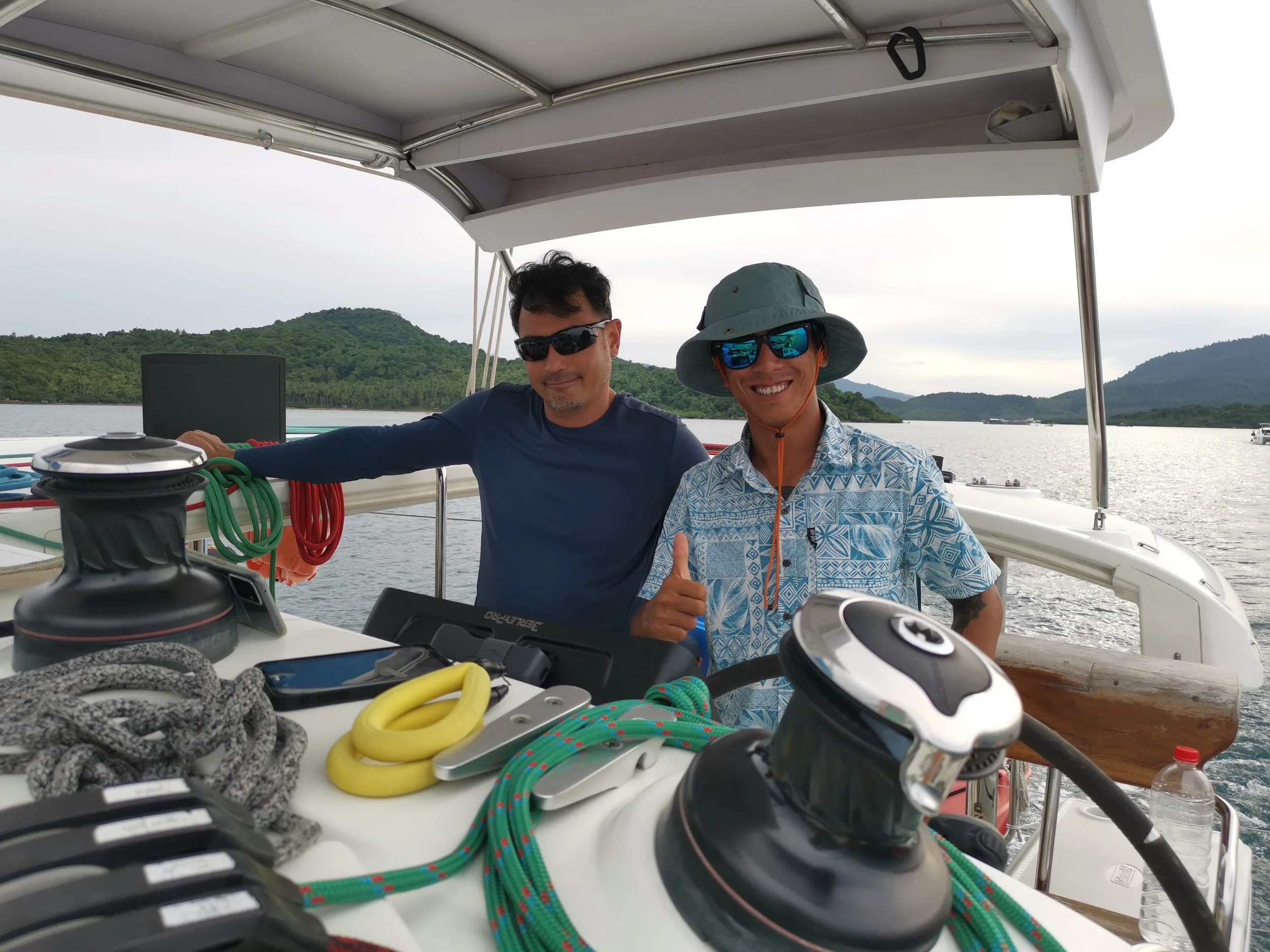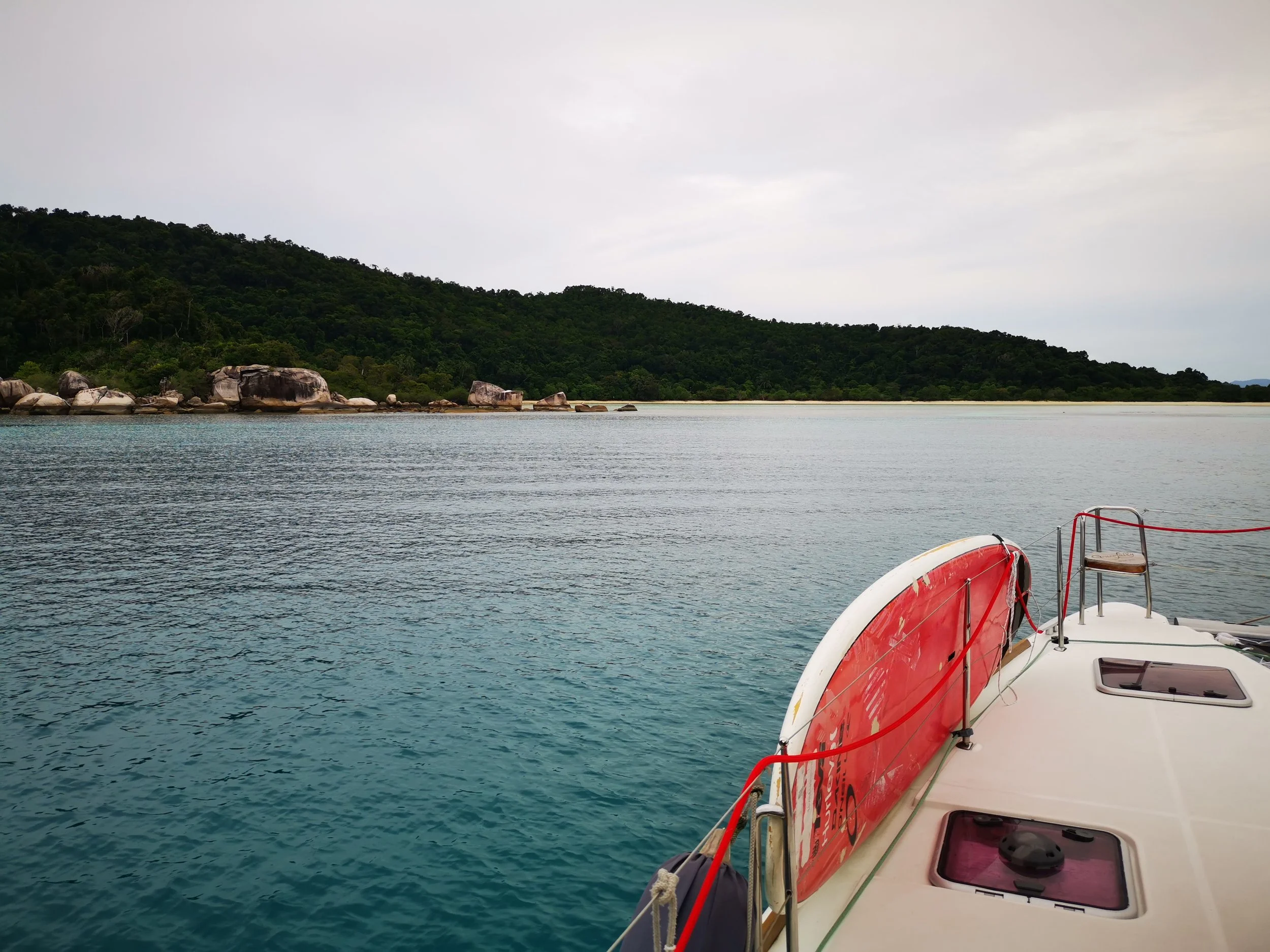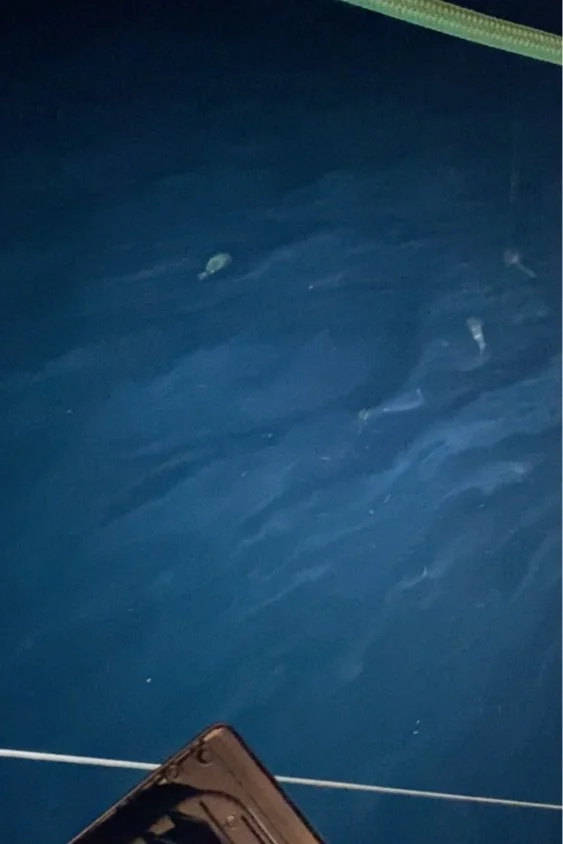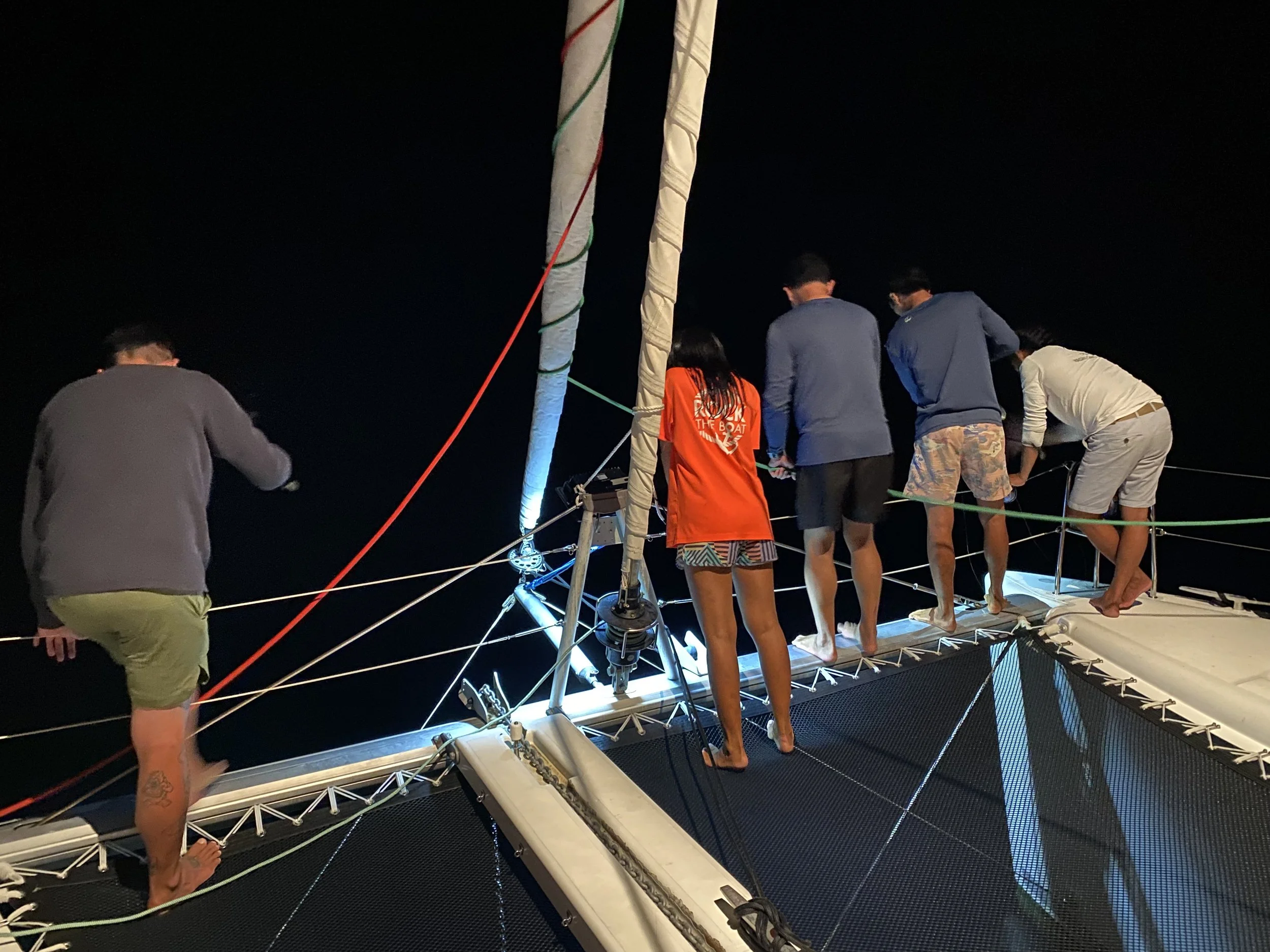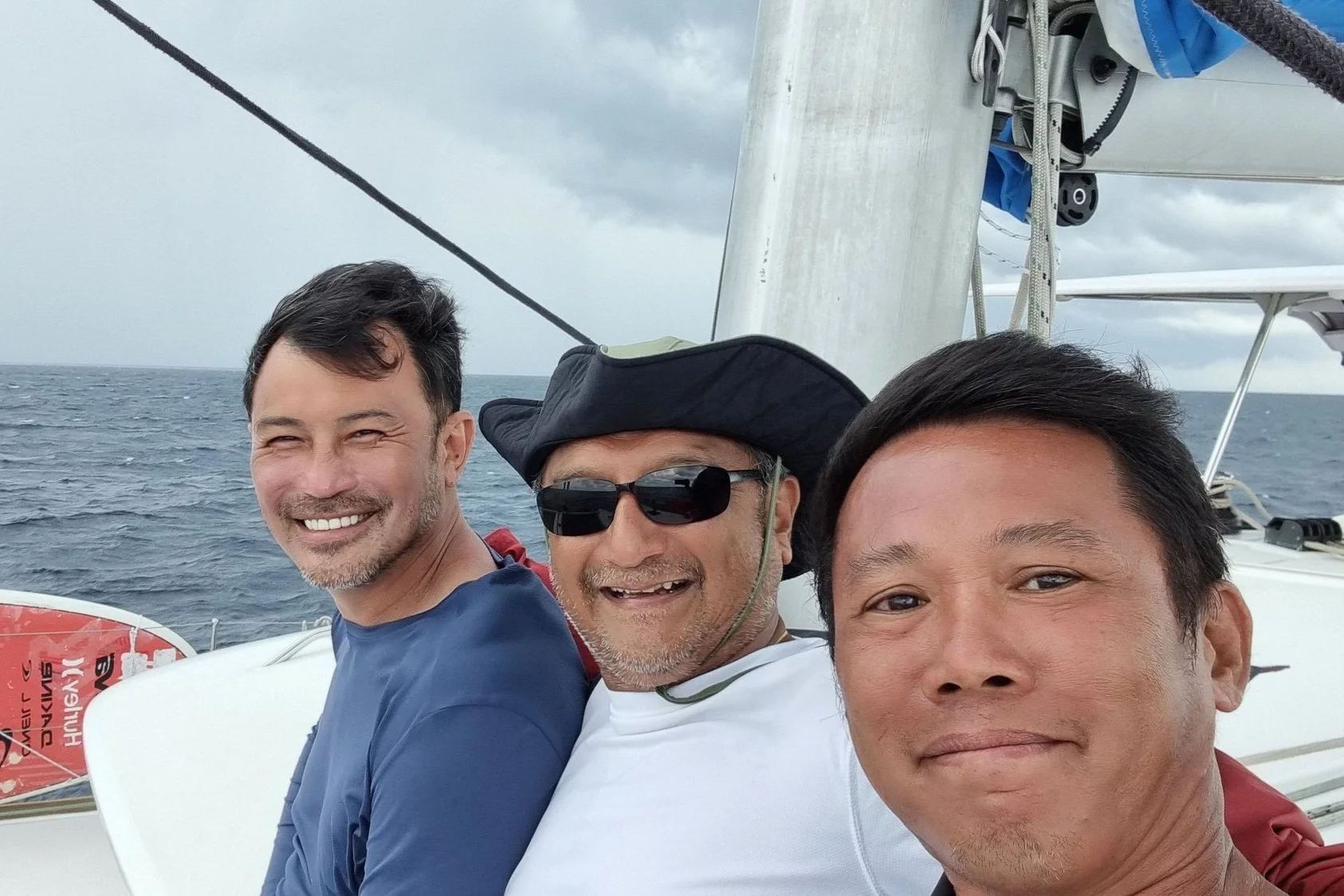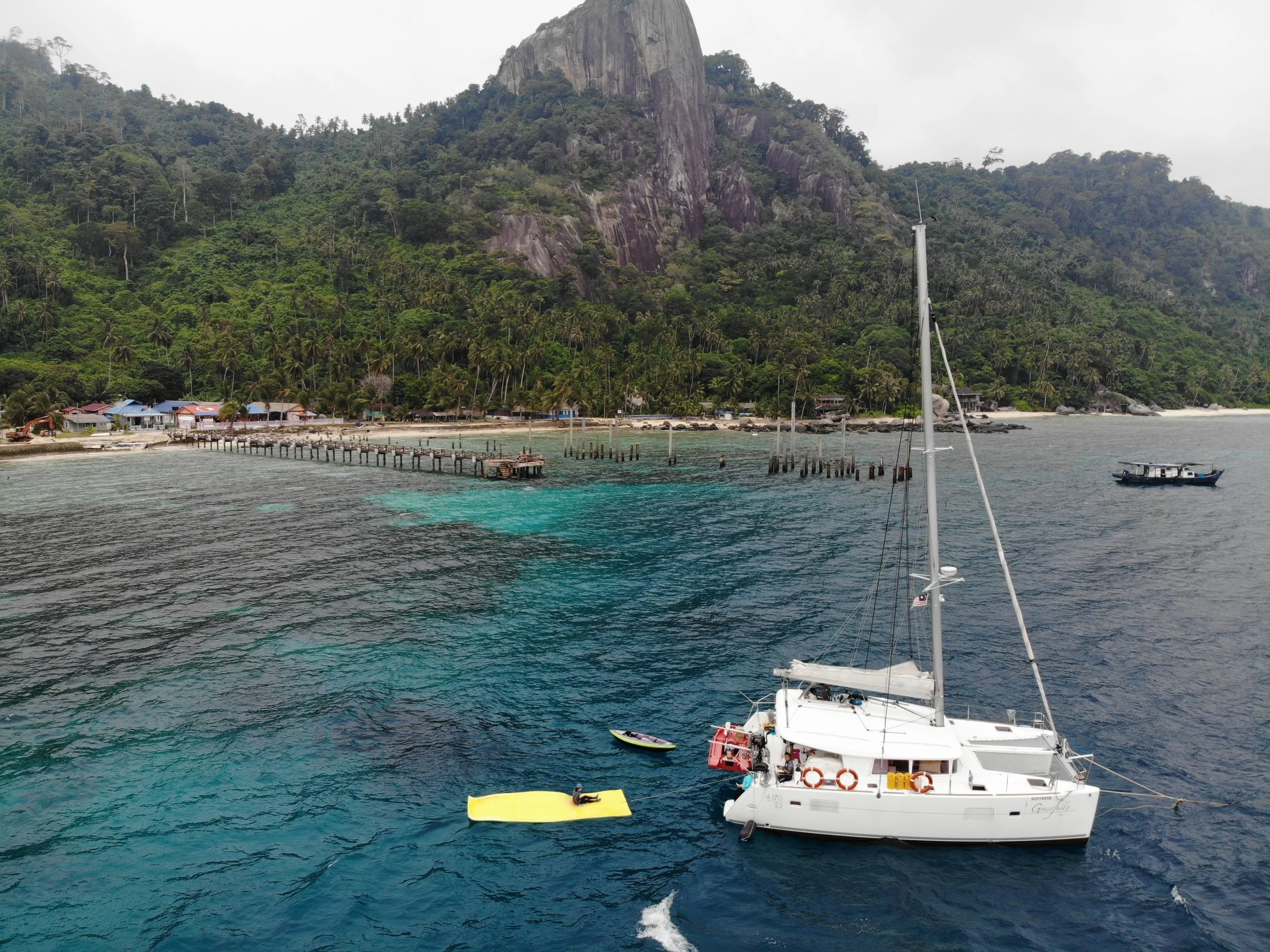Sailing to Anambas Islands Team Trip 2022 - Part 2
HEY FOLKS!
Welcome back to our adventure! If you need a refresher, read part one here! If not, leggo!
Arrival at Tarempa port
After almost 40 hours of sailing, we finally arrived at the beautiful Tarempa, where the main port of Anambas Islands is, at around 7am in the morning! As you enter the bay, the first thing you will notice is the beautiful mosque, which is situated at the tip of the bay! We dropped our anchor just in front of the jetty and prepared for arrival clearance.
Prior to covid years, our usual CIQP (Customs, Immigration, Quarantine Health and Port Clearance) point was at Nongsa Point Marina, Batam, where we do a pit stop before sailing to Anambas Islands. However, in its efforts to boost tourism in this beautiful archipelago, Anambas Islands has now opened its port for international arrivals such that yachts can clear directly at Tarempa. Hence, this time, we decided to give it a try and sail directly to Tarempa. For those who are keen, we did a separate blogpost about the CIQP clearance process, which we thought fellow boaters may find useful.
The Anambas Islands cluster.
The port of Tarempa is a bustling, colourful town with many shops selling fresh fruits and produce, toys and wares, restaurants serving simple yet delicious-looking Indonesian meals, offices, schools, residences and a mini-highway leading to the prominent mosque. It is a warm and comforting sight to arrive at after 40 hours of endless sea view. It is worth spending a few hours here to explore the town by foot and perhaps have a hearty lunch at one of the warungs (a small Indonesian retail, eatery or café).
Unfortunately, our CIQP process took longer than expected and it was 2pm by the time we cleared. We had to give it a miss (hopefully we can visit on our next trip!) so that we could make our way to our planned anchorage before sundown.
Since Tarempa is located towards the north of the cluster, we took this opportunity to plan our visit around the islands surrounding Tarempa and the north eastern islands, which we have yet to explore in previous sailing trips to Anambas.
You can join us on our next adventure via our upcoming open sailing holidays:
Making Way to our First Anchorage: NIGHT FISHING
We made our way east toward Pulau Mandariau via the channel between the south of Matak Island and north of Pulau Batubelah. There are several uncharted reefs and no guiding markers in this channel, hence we had to rely heavily on our satellite charts more than our nautical charts. Also, we ensured we were crossing at high tide (and with good visibility) and slow speed, and positioned lookouts all around our yacht. In true Singaporean kiasu spirit, we had 4 of us at the bow, 1 on each side, and 2 skippers at the helm. Thankfully, we made it out of the channel safely and arrived at Pulau Mandariau Bay at the north of the island just before the sun sets.
We were welcomed by a nice sheltered bay with clear waters, where we could see patches of corals in about 8-10m depth with a sandy bottom. It was an ideal anchorage for our first night in Anambas Islands.
Squid boat spotted!
Apart from the beautiful islets in the regency, squid boats and fishing boats are a common sight as we sailed around Anambas. Many of the squid boats that we spotted look just like the tug boats that we see in Singapore waters - a motored boat up front, towing a cargo platform at the back with a rope. If you’ve noticed from the short video here, these boats are usually decorated with powerful lamps around their structure, apparently to help attract smaller fishes, and in turn, squids (which feed on these small fishes). At night, they shine so so brightly!
As we settled in for the evening, some of us decided to do some fishing, while taking turns to wash up. This was when we noticed baby cuttlefish swimming around our yacht! We figured our bright deck light attracted them to the surface, so we started rummaging through our tools - we had torches, big lamps, small lamps, and placed them at the bow - lo and behold, there were so many of them!!
We dropped our fishing lines and attempted to catch some cuttlefish for supper. Having no luck with our lines, and perhaps with our fatigued minds, we came up with the idea to use our bow and arrow to “hunt” for cuttlefish. >.<
Wondering why we have a bow and arrow on board? While planning for this trip, we came across reports citing the economic impact of the pandemic had led many people to resort to sea crimes, causing a steep rise in piracies and robberies out at sea. We got a little scared and decided to bring along our bow and arrow (from Decathlon, no less) to make us feel like we had some kind of self-defence hahaha.
We tied our fishing line to the end of the arrow so that we can retrieve it after shooting. Obviously, we didn’t manage to catch any with a bow and arrow, but we did catch one (a very precious piece) with our fishing line!
In the Northern Cluster: ISLAND HOPPING AND SNORKELING ALL DAY, EVERYDAY!
The Anambas Islands boasts an underwater paradise, what better way to experience its full glory than to snorkel and snorkel? So that’s what we did everyday - wake up, have breakfast, put on our snorkel masks and fins, go snorkelling. Then we’d come back for lunch, rest a while, and go snorkelling again, all the way until it was time for dinner. And trust us, we never got sick of it! Every spot we visited had a different highlight.
We drift snorkelled from sandy beaches, letting ourselves be carried by the current back to our yacht as we marveled at the vast coral landscape, all kinds of little fishes drifting together with us, and sighting a pair of bumphead parrotfishes and turtles swimming along. We also spotted a Crown-of-Thorns starfish. We also tried spearfishing while snorkeling. Of course, we are no spearfishing experts like the locals here, so we caught nothing. >.<
Other than the occasional fishing boats, we did not see any other people living at the islands we visited. We literally had the islands to ourselves, and spent our time snorkeling endlessly, or taking a walk and collecting seashells along the beaches. We could become children again, playing and immersing ourselves in nature, without any distractions from our electronic devices.
Scuba Diving
We are all inspired to have such lifelong friends who share the same passion!
If you’ve been on board Gracefully, you’d noticed that we have 4 dive tanks and a small dive compressor at the back of the boat! These dive tanks are usually used for inspecting and cleaning our yachts’ hull, which is done by our commercial diver, Hansen from our Yacht Care team. For our overseas sailing holidays, our dive tanks are also on standby for guests who are certified and would like to do some diving.
For this trip, we have 3 Master Scuba Divers on board - Darren, Hansen, and Anthony. who spent their teenage years working as dive instructors and each clocking over a thousand dives since. We took the opportunity to conduct some orientation or refresher dives for the rest of our team, who were either still newbies or have not dived for a prolonged period.
We had an amazing diving experience during our previous sailing trips to Anambas, and were really looking forward to see if it would be similar at these new islands destinations. There were several thriving coral communities, but unlike before, we also found evidence of dynamite fishing and coral bleaching. Sadly, large clusters of corals have been blasted and toppled.
Revisiting the Southern Cluster: HEALTHY, UNTOUCHED CORAL REEFS!
Hence, we decided to take a bet and head back south to revisit the islands we visited during our previous sailing trips to Anambas, hoping that the further away we were from the port, the less likely the islands are exposed to dynamite fishing. We were right; we noticed that fewer fishing boats were in sight and the corals were much healthier and untouched toward the south.
We anchored mostly in 8-10m depth, where we would just be next to a vast area of fringing coral reefs on a gentle slope. We could literally jump into the water from our boat and start snorkeling toward the island. We swam above all kinds of corals, common ones are staghorn corals, beautiful sea fans, lettuce corals, brain corals, finger corals, mushroom corals, long sea whips - you name it, we saw it! We also saw a huge variety of tropical fishes, from parrotfish, to batfish and of course, the cute clownfish (‘Nemo’), lots of sea urchins, and even played with a shy pufferfish hiding under a massive starlet coral.
We could spend hours snorkeling and freediving in one spot, because there was so much to marvel at.
Fun Fact: Did you know that the presence of sea urchins are an indicator of healthy corals? Data has shown that corals with urchins are more resilient and grow more. This is because the urchins feed on algae that grow on corals, preventing an overgrowth of algae from smothering the corals. This thereby help to maintain conditions necessary for coral communities to recover after bleaching events or storms.
Other activities: hermit crab race
Have you ever seen hermit crabs on the beaches of Singapore? While we were walking along the beaches, we noticed so many hermit crabs moving along in the sand! And such, we decided to collect a few to have a hermit crab race on board. Don’t worry, every single one was released back to the beach.
Compared to the electronic games that the kids nowadays are only familiar with, this was a simple yet so entertaining game that made us all excited and (crazily) cheering our “horses”!
Fun Fact: Hermit crabs queue up to take a bigger shell as they grow out of their old shells! As the hermit crabs start to grow out of their shells, they need to re-home themselves, by looking for bigger shells. As they come out of their old shell, another hermit crab, who is also growing out of its shell, will take over.
All in all, we had such an enjoyable time being away from the city and just basking in the sun, sand and sea. We were all recharged after reconnecting with the best of nature. Returning to Singapore with our windswept hair, salty skin, and tanned faces, we are ever more determined to bring more people to explore the magic of a sailing adventure.
Here’s a video to commemorate the trip!
We hope you enjoyed our sharing! If you’d like to read more about what makes our sailing holidays special, check out Part 1 of our blog: Sailing to Anambas Islands Team Trip 2022 - Part 1
If this sounds like an adventure you’d like to go on….
Join us on our upcoming Open Sailing Holidays:
Otherwise, if you’d like to visit the Anambas Islands like we did…
6D5N Sailing Holiday to Anambas Islands
Set sail to paradise.
Overseas Sailing Holidays
Explore the magic of our neighbouring islands.

